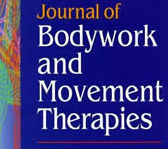已发表的论文

Stiffness of resting lumbar myofascia in healthy young subjects quantified using a handheld myotonometer and concurrently with surface electromyography monitoring
Authors: K. Nair, A. Masi, B. Andonian, J. Alexander, B. Coates, J. Dougherty, E. Schaefer, J. Henderson, J. Kelly
Affiliations: Mechanical Engineering, Bradley University, Peoria, IL, USA
Journal: (December 2015) (DOI: 10.1016/j.jbmt.2015.12.005)
This study aimed to non-invasively quantify passive stiffness of superficial myofascia at a lower lumbar (L3-L4) anatomical level in young healthy male and female subjects and investigate its possible morphological variation. Resting prone lumbar myofascial measurements were quantified using MyotonPro® and statistically analyzed in 20 young healthy individuals over 3-weekly intervals, concurrently with surface electromyography (sEMG). Averaged mean ± SE stiffness (Newton/meter) over three weeks was significantly (p < 0.001) greater in males (247.8 ± 11.3) than females (208.4 ± 11.3), on the right (237.7 ± 12.8) than left sides (218.5 ± 12.3), at 10-min (231.4 ± 9.1) than initial baseline (224.8 ± 9.1) values. A polymorphism of stiffness values in 10 male and 10 female subjects was suggested by box plot analyses of the 3 weekly measurements and greater inter-individual than intra-individual variances. Greater knowledge of lumbar myofascial stiffness can improve understanding of their contributions in health and chronic low back disorders.
Significantly greater resting lumbar myofascial stiffness was observed in males than females as well as right vs. left sides, and at the 10 min vs. baseline prone measurements. A resting state of lumbar myofascia was supported by the strong correlation between stiffness and frequency measurements as well as recorded sEMG measurements always <5 mV. The lower within-than between-subject myofascial stiffness variances suggest the possibility of a polymorphism occurring in this property within the study sample. Documentation of a polymorphism in the vital trait of resting myofascial stiffness may enhance understanding of its role in stabilization of equilibrium postures and possible risks of developing particular chronic low back musculoskeletal disorders.


